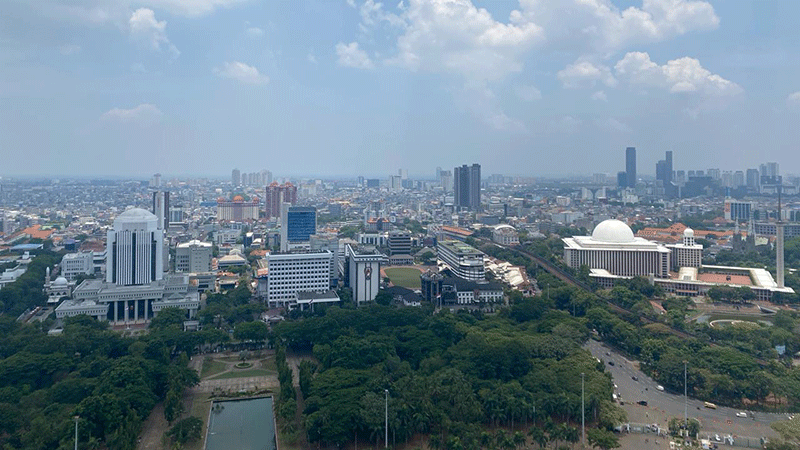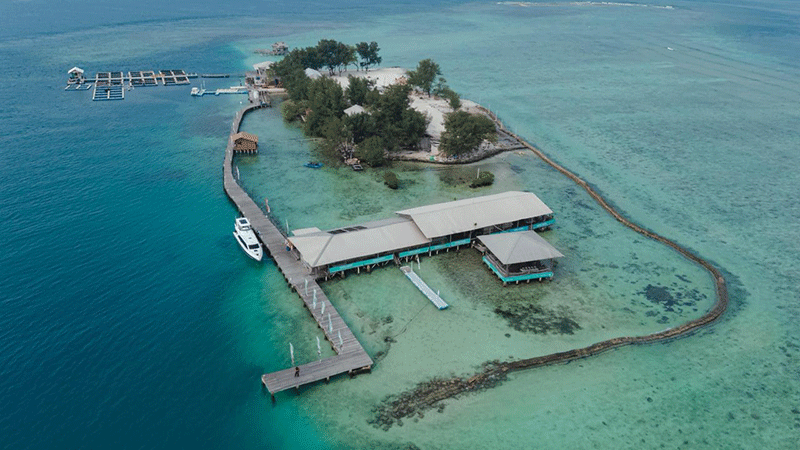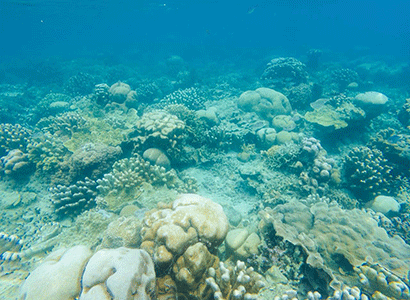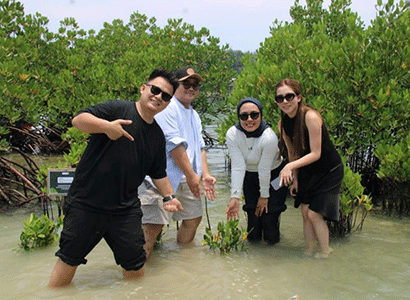 |
| A view from the top of the National Monument (Monas) showing Jakarta’s cityscape and surrounding greenery, where urban life melds with calm open spaces. |
Jakarta: A city where urban energy meets the calm of the sea
When people think of Jakarta, they often imagine endless traffic, the blare of horns, and millions of people rushing to keep up with the city’s fast pace.
But behind this constant movement lies another Jakarta—one that surprises, inspires, and welcomes you with both its energy and its soul.
Recently, the Indonesian Embassy in Laos, in collaboration with Jakarta Tourism, invited journalists and online content creators to discover this side of Indonesia’s capital. It was a journey that opened my eyes to the city’s contrasts, where modern life, history, and nature live side by side in perfect rhythm.
The first stop of the trip was the city’s most iconic landmark—the National Monument, or Monas. Rising more than 130 metres high in the heart of Merdeka Square, it stands as a proud symbol of Indonesia’s independence.
 |
| The tranquility of the Thousand Islands (Kepulauan Seribu), just an hour from Jakarta. --Photo NOUZ Trip |
The peak provides a sweeping 360-degree view of Jakarta. From above, the dense traffic looked like tiny streams, the high-rises stood tall beside clusters of green parks, and the vastness of the city stretched endlessly towards the horizon.
In that moment, the chaos below turned into something beautiful—a living rhythm that defines this vast metropolis of over 11 million people.
But what truly makes a city alive is not just its skyline, it’s how its people move and connect. Our tour guide introduced us to the Rapid Transit Buses (TransJakarta). This isn’t just any bus service; it’s a main artery running in dedicated lanes, serving the entire city.
“The fare is less than 5,000 rupiah, about 30 cents,” our guide said with a proud smile. It was a small detail, yet it spoke volumes about how the city tries to care for everyone—from office workers to street vendors—making public transport accessible to all.
We then travelled back in time to Jakarta’s historical heart, the Old Town or Kota Tua. Once the centre of colonial Batavia, this area carries echoes of a slower, more elegant era. Cobbled streets lined with whitewashed buildings, bicycles painted in pastel colours, and the sound of street musicians filled the air.
 |
 |
The Batavia Café was my favourite stop. The first step inside felt like entering a film from the 1970s. Wooden furniture, dim lights, old photographs, and the faint scent of cigars created a nostalgic mood.
Locals and tourists sat together, sipping coffee while the soft notes of a saxophone played in the background. Here, Jakarta’s past and present seemed to embrace each other gently, whispering stories from decades gone by.
Yet, the biggest surprise of my trip awaited me just an hour away from the capital’s noise. A short speedboat ride brought me to the Kepulauan Seribu, or Thousand Islands—a group of islands scattered across the Java Sea.
The transformation was unbelievable. The crowded streets gave way to open skies and turquoise water so clear that I could see fish swimming beneath the surface.
But the islands offer more than just beauty; they tell a story of responsibility and harmony between people and nature.
During our visit, we joined a group of locals planting mangroves along the coast. Our guide explained that the mangroves don’t just protect the shore from erosion. They also support local livelihoods because people here can make products from them, like soap.
It was an inspiring reminder that conservation is not just about saving the environment; it is also about helping communities grow sustainably.
But the highlight of the day lay beneath the water. Snorkelling in the crystal-clear sea, we entered another world entirely. Schools of fish glided past coral gardens filled with vivid colours, moving gracefully through the sunlight filtering down from above.
As we floated there, I thought about how Jakarta is often misunderstood. It’s not only a capital of commerce or politics; it’s a place with two hearts beating in harmony.
One beats fast with ambition, reflected in the skyscrapers and the movement of millions. The other beats slowly, in rhythm with the sea, the wind, and the laughter of island children chasing waves.
From the heights of Monas to the nostalgic charm of Batavia Café, and across the blue waters of the Thousand Islands, Jakarta revealed itself as a city of balance—a metropolis that can both excite and soothe the soul. It taught me that even in the busiest of places, serenity can be found if we know where to look.
Jakarta, in the end, is not just Indonesia’s capital. It is a living poem written by its people, shaped by its history, and coloured by the sea that forever embraces its edge.
By Phonepaseuth Volakhoun
(Latest Update October 22, 2025)
|





